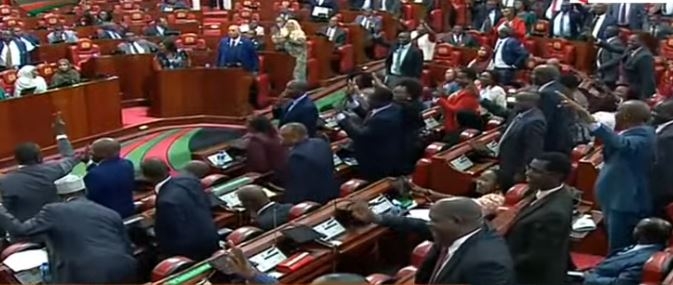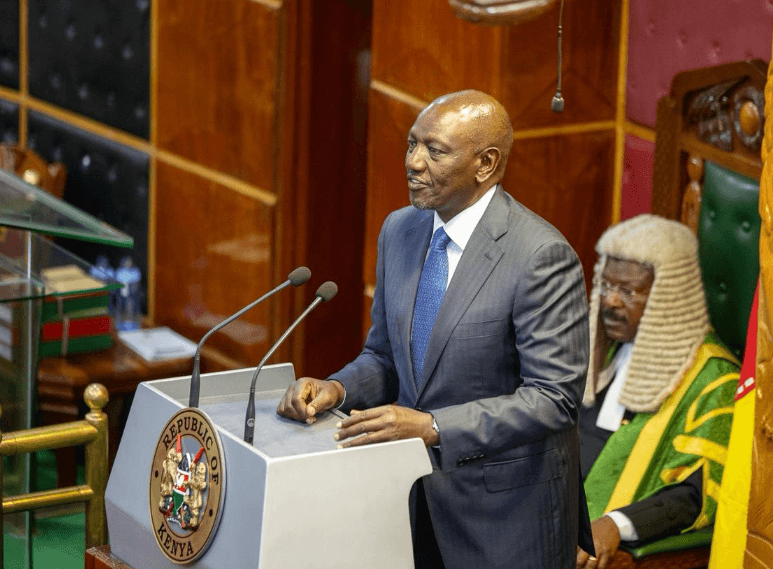
 The Central Bank has cut its base lending rate to 9.50 per cent from 9.75 per cent. /CBK
The Central Bank has cut its base lending rate to 9.50 per cent from 9.75 per cent. /CBKThe Central Bank has cut its base lending rate to 9.50 per cent from 9.75 per cent in a move aimed at spurring private sector lending and boosting economic activity.
The Monetary Policy Committee (MPC) announced the 25-basis-point reduction after its August 12 meeting, citing stable inflation, resilient growth and a steady exchange rate.
“Having considered these developments, the committee therefore concluded that there was scope for a further easing of the monetary policy stance to augment the previous policy actions aimed at stimulating lending by banks to the private sector and supporting economic activity," CBK Governor Kamau Thugge, who chairs the MPC, said.
He said measures are in place to ensure inflationary expectations remain firmly anchored and the exchange rate remains stable.
"The MPC will closely monitor the impact of this policy decision as well as developments in the global and domestic economy and stands ready to take further action as necessary in line with its mandate," Thugge said.
The committee observed that inflation has remained steady, standing at 4.1 per cent in July 2025, up from 3.8 per cent in June, well below the mid-point of the target range of 5±2.5 per cent.
Core inflation rose marginally to 3.1 per cent from 3.0 per cent, largely driven by higher prices of processed foods such as sugar and maize flour.
Non-core inflation climbed to 7.2 per cent from 6.2 per cent due to higher energy prices.
The MPC expects overall inflation to stay below the mid-point in the near term, supported by lower food prices, stability in energy costs, and continued exchange rate stability.
In a press briefing after the meeting, Thugge said new GDP figures show the economy expanded by 4.9 per cent in the first quarter of 2025, buoyed by strong agricultural performance and a rebound in industrial activity, particularly construction.
Economic growth is projected at 5.2 per cent in 2025 and 5.4 per cent in 2026.
Survey data from July 2025 showed optimism among CEOs and market players over the next year, driven by favourable weather conditions, a stable macroeconomic environment, low inflation, a steady exchange rate, falling interest rates, and the expansion of the digital economy.
Some respondents, however, cited subdued consumer demand, high business costs, and global uncertainty as concerns, the MPC said.
The committee gave the country's current account deficit a clean bill of health, saying it narrowed to 1.6 per cent of GDP in the year to June 2025, down from 1.8 per cent a year earlier.
Goods exports grew by 7.7 per cent, supported by horticulture, coffee, vegetable oil, and clothing accessories, while goods imports rose by 9.9 per cent on account of higher intermediate and capital goods.
Services receipts increased 12.5 per cent, largely from transport and travel, while diaspora remittances were up 12.1 per cent.
The MPC projects the deficit will remain stable at 1.5 per cent of GDP in 2025, fully financed by financial account inflows, resulting in a balance of payments surplus and an increase in gross reserves by $673 million (Sh86.8 billion).
Foreign exchange reserves currently stand at $10,956 million (Sh1.41 trillion), equivalent to 4.8 months of import cover, which the MPC says provides “adequate cover and a buffer against any short-term domestic and external shocks.”
Banking sector stable
The banking sector remains resilient with strong liquidity and capital adequacy ratios, the MPC revealed.
It said the ratio of gross non-performing loans to gross loans was unchanged at 17.6 per cent between April and June 2025, with declines in construction, personal and household, and manufacturing loans offset by increases in trade, tourism, and hospitality.
Private sector credit growth improved to 3.3 per cent in July from 2.2 per cent in June and a contraction of 2.9 per cent in January 2025.
The committee noted that lending to manufacturing, trade, construction and consumer durables sectors increased alongside falling interest rates.
Average commercial bank lending rates declined to 15.2 per cent in July from 15.3 per cent in June and 17.2 per cent in November 2024.
The MPC also reviewed a proposed revised Risk-Based Credit Pricing model for banks, which is expected to improve the transmission of monetary policy decisions to lending rates.
Despite the positives being registered on the local scene, MPC said the global market remains uncertain.
Growth projections for 2025 have been revised upwards to 3.0 per cent from 2.8 per cent, driven by the US and China following reduced tariffs and improved financial conditions.
Global inflation is expected to fall in 2025 due to lower energy prices and weaker demand.
However, risks from trade policy uncertainty, the Middle East crisis, and the Russia-Ukraine war remain high.
Oil prices have moderated but remain volatile, while food inflation has risen, driven by edible oils, though cereals and sugar inflation remain low.
The MPC will meet again in October 2025 to review economic developments.







![[PHOTOS] Betty Bayo laid to rest in Kiambu](/_next/image?url=https%3A%2F%2Fcdn.radioafrica.digital%2Fimage%2F2025%2F11%2F3b166e2e-d964-4503-8096-6b954dee1bd0.jpg&w=3840&q=100)








